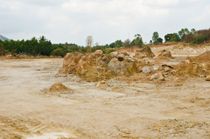Understanding How Ground Penetrating Radar Works

In any kind of engineering or construction process, it is pivotal to know everything you can about the terrain you’re dealing with. Since only so much is visible on the surface, companies turn to ground penetrating radar to understand the lay of the land. Specialists like Haggith's Structural Scan & Inspection are among the leaders in what’s called GPR technology. Based in Kaneohe, HI, they are masters in providing useful information through a non-destructive inspection.
The most crucial aspect of ground penetrating radar is that it does not require any disruption of the soil or ground. The operation works through a system of electromagnetic impulses sent and received by highly sensitive antennae. Using sophisticated machinery, a radio wave is sent into the ground — the kind of topography that it encounters will determine when it is reflected back to a receiving antenna as well as the speed with which it returns. After enough signals are sent down and recovered, you’ll be able to have a clear visual about what’s going on beneath the surface.
 Ground penetrating radar is most useful for identifying irregularities in the ground, such as voids or breakdowns in the rock. The information gathered from the radio waves will allow construction crews to be strategic about where they should dig and where foundations should ultimately be laid. Without this information, any wrong guesswork could have serious negative implications for a structure, making it much less secure. Other methods of obtaining visuals such as digging will wind up altering the underground landscape, creating more difficulties and unknowns. With radio waves, you can gain the images with no downside.
Ground penetrating radar is most useful for identifying irregularities in the ground, such as voids or breakdowns in the rock. The information gathered from the radio waves will allow construction crews to be strategic about where they should dig and where foundations should ultimately be laid. Without this information, any wrong guesswork could have serious negative implications for a structure, making it much less secure. Other methods of obtaining visuals such as digging will wind up altering the underground landscape, creating more difficulties and unknowns. With radio waves, you can gain the images with no downside.
To ensure your construction project is being planned in the smartest way, it’s wise to employ ground penetrating radar. You can discuss the specific details of your campaign by calling Haggith's Structural Scan & Inspection at (808) 239-4330. Learn more about the company by visiting their website.
About the Business
Have a question? Ask the experts!
Send your question

